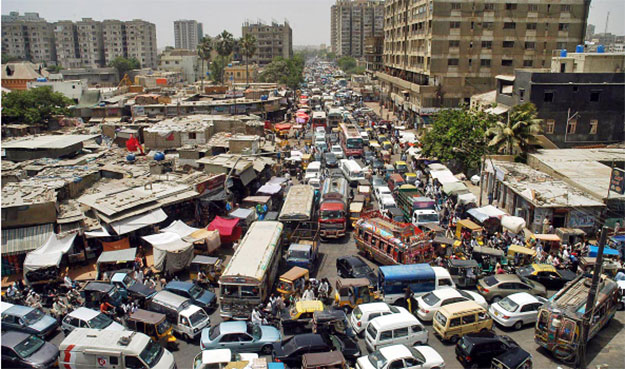
The architect and urban planner discussed the history of public transport in Karachi at a workshop, titled 'Transport Dilemma of Karachi' on Saturday, organised by Shehri - Citizens for a Better Environment.

Hasan's nostalgia for Karachi's public transport starts with the iconic tramways, which were closed down in 1974 because they were causing too many accidents and disrupting vehicular traffic. "A proposal for an underground metro was to be developed to replace it." That was back then. The proposal never saw the light of day.
1959 Karachi resettlement plan
On the 1959 Karachi resettlement plan and its effect on the transport system, Hasan explained how the demands for transport had considerably increased as a result. According to the plan, two satellite towns — New Karachi in the north and Landhi-Korangi in the south-east — were created about 20 kilometres from what was then the city centre. "The industrial areas were an integral part of these plans and the concept was to provide the residents of these two towns, jobs in the industrial areas so they would not have to travel to the city," he said. "Health and education facilities were also provided but the industries did not materialise and the working population started commuting long distances on bad roads to the city's business districts, port and adjacent industrial areas." Hasan added that the number of taxis in the city in 1951 was only 32.
Government's initiatives
In order to cope with the situation, the then government started some initiatives to address the transport issue. Hasan recalled the government's initiative from 1948, when people migrated en masse from India. The then federal government provided transport to and from the new settlements. "In 1950, this initiative was handed over to the Karachi Improvement Trust (KIT), which was established to plan for the expansion and management of the city," he said, adding that by 1957, the KIT initiative proved to be highly insufficient. In December 1957, the Karachi Transport Syndicate (KTS) was set up with a fleet of 280 buses. "The KTS too was declared a failure in 1958 and was disbanded in December that year."
The following year, the Karachi Road Transport Corporation (KRTC) was established as a joint venture of the central government and the general public who were invited by shares. "A total of 324 buses and 24 double-deckers then started operating and adequate depots and workshops were provided for these buses," he explained. "By 1964, the KRTC was also rounded-up for unknown reasons."
In 1968, the Karachi Master Plan 1975-85 was prepared with the assistance of the United Nations. "In 1973, when Pakistan was subdivided into provinces, the Sindh Road Transport Corporation (SRTC) was established and 2,000 buses were inducted into the system," he said, and adding that the SRTC was further divided into the Karachi Transport Corporation (KTC) for the city, while the SRTC looked after the rest of the province under the provincial government.
Speaking on the performance of KTC, he said that the links with the nationalised automobile industry were created to develop technology to build larger buses. As a result, 550 large buses were introduced. "A bus terminal capable of handling 200,000 passengers daily was created."
Enter the minibus
In 1971, the government introduced a transport policy, known as 'The Free Transport Policy'. According to Hasan, this policy was introduced due to the ever-increasing demand for transport from the various katchi abadis (suburbs) developing on the then periphery of Karachi since government transport only operated on the main corridors of the city. "This policy created the minibus in Karachi," he said.
Published in The Express Tribune, May 4th, 2015.

























1714024018-0/ModiLara-(1)1714024018-0-270x192.webp)









COMMENTS
Comments are moderated and generally will be posted if they are on-topic and not abusive.
For more information, please see our Comments FAQ